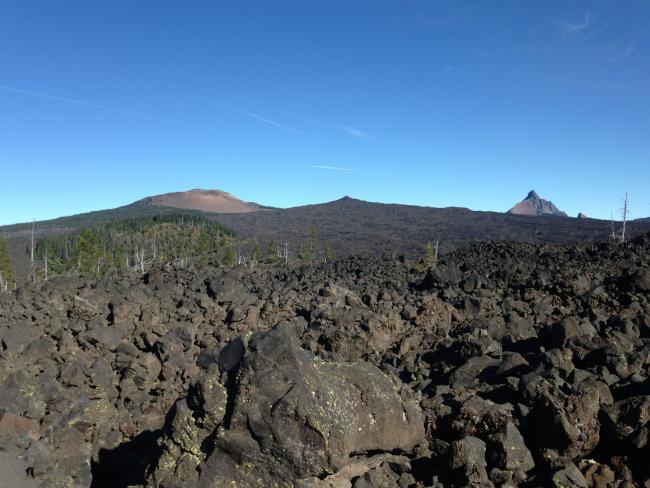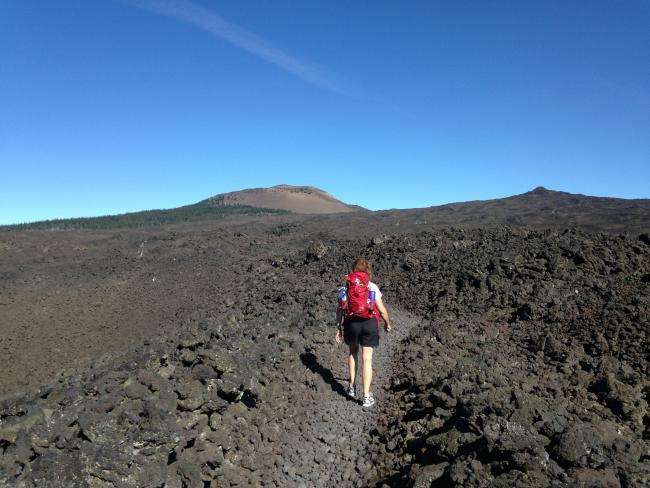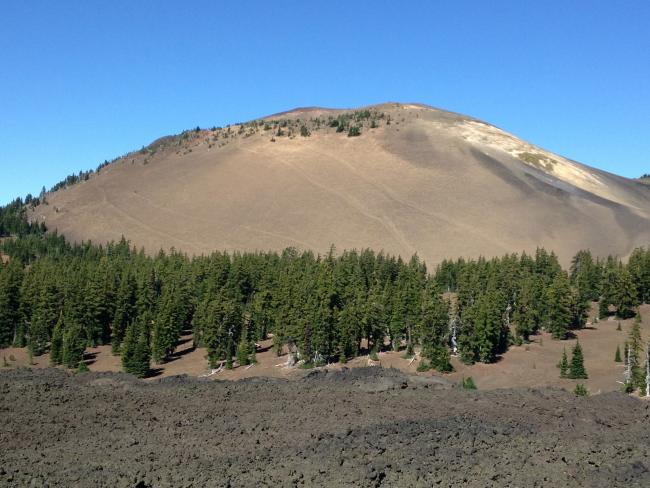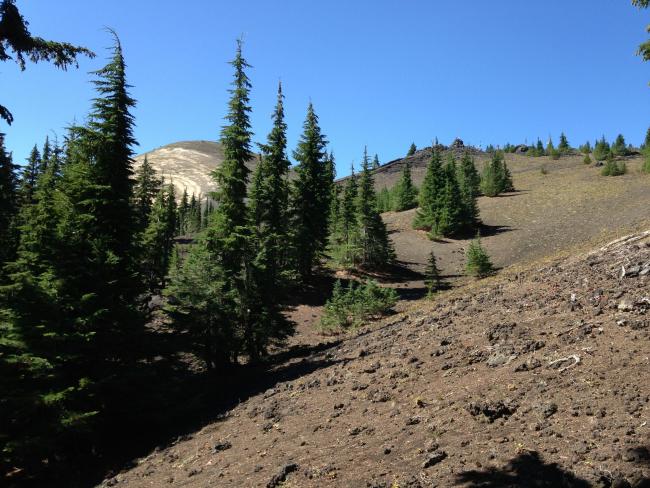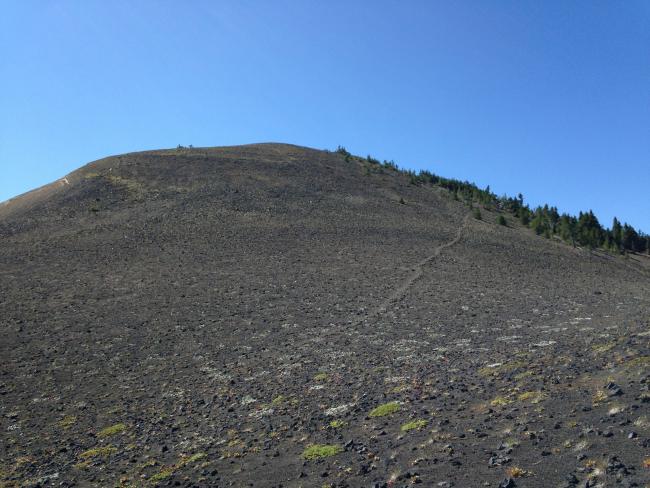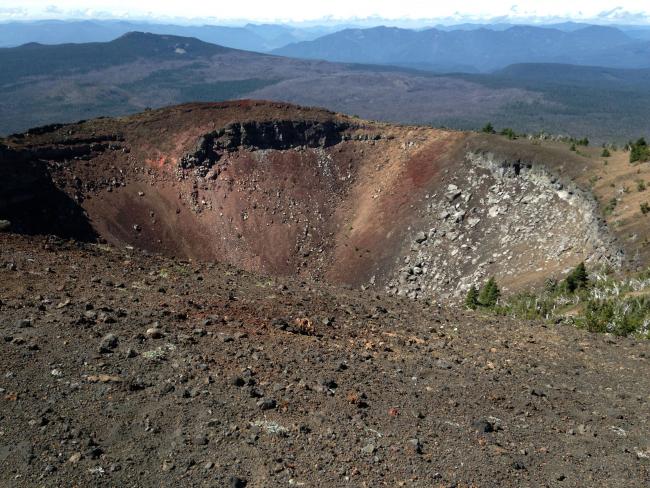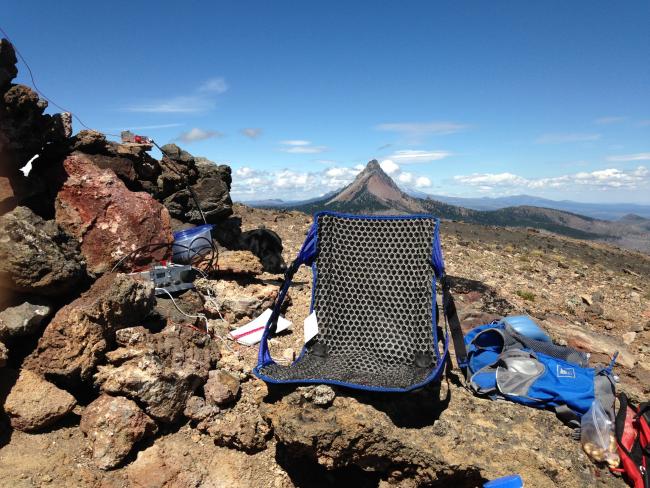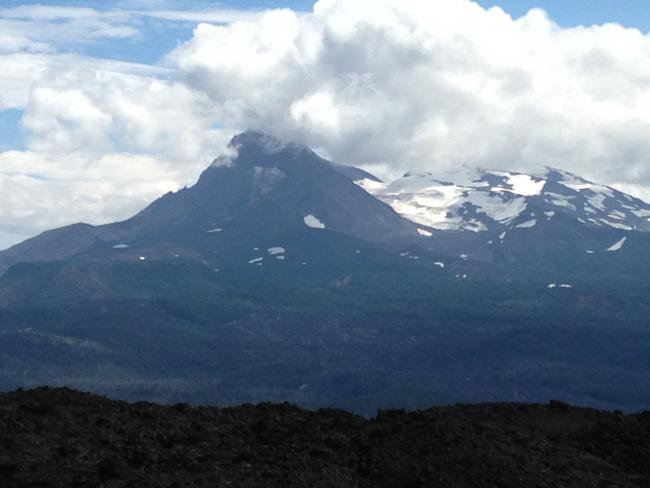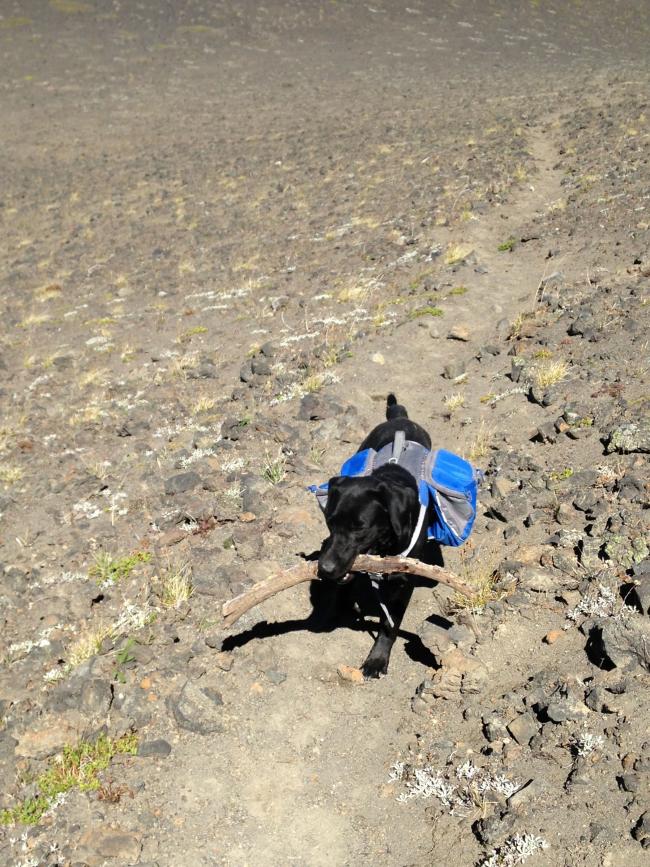You know that day in a late western Oregon summer when the wind blows a little
differently? That special wind tells you that summer is pretty much done and snow
is on the way. This was one of those days.
We started out in overcast valley skies as we headed towards Eugene and Hwy 126
traveling towards the Cascades. As we passed the 3000ft elevation sign on Hwy 242,
the skies cleared and the day was bathed in bright sunshine with a blue sky clearer
than a New England winter day. Another great day to enjoy the mountains, a little
radio and simply being alive.
We were headed towards Belknap Crater, a 6872ft remnant of a shield volcano. It's
not exactly a beautiful mountain but still interesting to climb. To get to the
peak, take the Pacific Crest Trail north, starting off of Hwy 242 beginning about
1/2 mile west from the Dee Wright Observatory. This is also known as trail #2000.
This portion of trail is primarily through a lava field. Sturdy shoes are strongly
suggested. Also, watch your step here as falling off the trail into the lava rock
would be like falling into a box of razor blades. If you take your dog, be sure
their pads are able to handle the lava rock.
Follow the trail 2.4 miles to a turnoff for Little Belknap, then continue North for
about another .4 mile, well into a forested area. Here, you head west, crosscountry,
staying in the wooded northern slopes of Big Belknap.
We took 2 hours and 15 minutes to get to the summit from Hwy 242. The elevation gain
was about 1900 feet in 3.6 miles. Yeah, we are slow, but we have a good time!
Don't attack the front (eastern) slope unless you are a masochist. The slope of
the north ridge is far more gradual and enjoyable. A defined trail to the summit
appears in the saddle just to the north of the summit.
There was still a patch of snow on the north side of Belknap to greet us and serve
as a reminder of weather to come. Cooper, the black lab SOTA dog, shot off for the
snow. It was the closest thing to a pond he could find. He had found a stick and
was hoping for a body of water for fetching. He came back dejected as the snow just
wasn't working for him.
The top of Belknap Crater is pretty much devoid of vegetation. A few very short
scrub trees are there and could provide support for masts. We used a small rock
shelter just down from the main peak for a mast support and much needed shelter
from the wind. On this day, I estimated the wind to be 30 Mph, gusting to 40. The
temperature was about 50 Deg F and it took only a minute or two to become completely
chilled in the full wind. Behind the rock shelter however, it was sunny, and quite
pleasant. The views were spectacular. Not a bug in sight.
Putting up the EFHW was a real Laurel & Hardy routine. Its humiliating moments like
this that make me glad that I'm the only one on the summit. I made a pocket in the
rocks of the shelter to hold the bottom of the mast and then strung out two guy wires
to a lava rock dead-man. The problem with the volcanic rocks is that they can be
quite big but they still weigh nothing. It took several tries to build anchors good
enough to keep the 10 meter mast up and in place. The failures were pretty funny.
I was impressed with the rigidity of the DK9SQ mast. It was bent over a fair amount
near the top but was holding its own quite well. It was a bear to get set into place.
Without my wife's help, it would have been very hard to erect. I wrapped the wire
around the mast to keep it from flying in the wind too much. Still, the wind rattled
the whole contraption with a sound like an old geriatric rattle snake.
I actually got on the air early since the climb was easy, so I pounced on NA6MG and
got him right away. I moved up a few kc's and called a CQ SOTA and heard two stations
come right back. Right then, I was reminded of nature's ways with a crash of my EFHW as
it hit the ground. Twenty minutes later I'm back on the air again with an even better
setup and guys. My wife held the bottom of the antenna in place (now that's love!) while
I polished off another dozen or so QSOs. Reports this day were not as good as earlier
expeditions probably due to the CME event the day before.
The station performed well, all things considered. A big thanks to all the chasers who
put up with stations that unexpectedly leave the air or that develop sudden weird CW
fists. You wouldn't believe what might be going on at our end!
After a nice lunch and a few pictures we were back down the hill. We did not take the
direct way down the east side. We backtracked down the ridge and this was most satisfactory.
I don't really like dumping a pound of scree out of my boots every 100yds. Cooper kept
his stick all the way back to the car, always hoping for that elusive pond to do some
fetching. Next time Coop. Next time.


